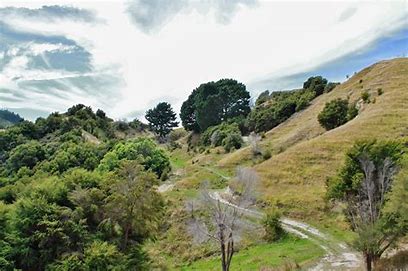Whangarei
17.89°C

Whangarei
17.89°C

Waitakere City
16.98°C

Manukau City
17.11°C

Papakura
24.46°C

Hauraki
17.26°C

Waikato
17.67°C

Matamata
18.46°C

Hamilton
17.51°C

Otorohanga
18.52°C

Rotorua
16.6°C

Taupo
15.44°C

Tauranga
19.27°C

Kawerau
18.6°C

Whakatane
19.64°C

Gisborne
15.51°C

New Plymouth
16.98°C

Stratford
8.97°C

Ruapehu
14°C

Wanganui
17°C

Palmerston North
16.41°C

Wairoa
19.19°C

Hastings
18.84°C

Napier
18.49°C

Masterton
15.49°C

Carterton
15.66°C

Porirua
15.99°C

Lower Hutt
16.45°C

Wellington
15.79°C

Tasman
9.35°C

Nelson
16.27°C

Marlborough
3.22°C

Kaikoura
15.48°C

Christchurch
12.59°C

Ashburton
12.52°C

Timaru
13.37°C

Waitaki
11.32°C

Waimate
13.08°C

Queenstown
12.38°C

Dunedin
14.33°C

Southland
9.98°C

Gore
11.31°C

Invercargill
12.06°C

Blenheim
14.73°C

Te Anau
27.35°C

Wanaka
11.17°C

Kaikoura
13.38°C

Stratford
13.54°C

Upper Hutt
15.9°C

About
Te Kuri Farm Walkway is located on a private farm on the northern outskirts of Gisborne. The walkway has a well defined track that is suitable for people with average physical fitness. It is a 2-3 hour loop that can be walked in either direction. The walkway initially passes through areas of flat farmland before steadily climbing 230 metres to a lookout point (Town Hill, 290 metres). There is a steady climb up to this lookout, and the view it gives of the Poverty Bay flats is well worth the effort. A special feature of the walk is the panoramic views which can be seen from various points along the route. There is one notable area of remnant, semi-coastal forest of a type once common on the foothills of the Poverty Bay Flats. The bush in the gullies is dominated by puriri, kohekohe and mahoe, while the ridges and slopes are clothed in kanuka, forest and blackwood plantations. Elsewhere radiata pine is the dominant species. The bush provides a home for a number of forest birds such as tui, kereru (native wood pigeon), owl (ruru), grey warbler (riroriro) and fantails (piwakawaka). On a clear day from the Town Hill lookout, visitors can see as far south as Mahia Peninsula and as far west as Maungapohatu on the eastern fringes of Te Urewera.
Wear good quality walking shoes or boots. There is no drinkable water available on the walk. The track crosses private farmland - be aware of stock and leave gates as you find them. No dogs, horses or mountain bikes are allowed on the walkway.
In earlier times there was a great deal of Maori settlement on the coast and inland to the hills around the Poverty Bay flats. A number of iwi (tribes) and hapu (sub tribes) are associated with the area, tracing their original settlement back to around the 12th century. Another period of settlement was initiated following Captain Cook's 1769 landfall in the bay and the city of Gisborne has developed out of this meeting of cultures. In the 1880's the majority of buildings were in what is now the central business district and along Gladstone Road. There were very few buildings on the northern side of the Taruheru River although Ormond Road was partially formed.
